The world’s museums are open again after the long pandemic shutdown and if we’ve learned one thing, it’s that no virtual museum tour can replace seeing artifacts in person and in 3D. It’s the reason museums were created in the first place; to see and sometimes touch objects from the past.
Of course, not every city’s natural history museum can have its own T-Rex. In fact, a complete T-Rex skeleton has never been found. This is where reconstructions and replicas have always played an important role. Exhibit designers have carved, cast, molded, and formed display objects and replicas for centuries. 3D printing just makes it faster, more accessible, more accurate, and less expensive.

Alongside these game-changing opportunities, 3D printing offers museum curators and directors increased flexibility to update, modify, and change their exhibitions more often attracting more frequent visitors. 3D printed replicas also offer the opportunity to create more interactive and tactile exhibits, without fear of damage coming to originals or even expensive copies. It can even bring artifacts and art lost to fire or war, back to life.
Let’s take a closer look at the benefits museums gain with 3D printing and how they are putting it to work today.
Why Museums 3D Print

Museums and their curators continue to embrace 3D printing as the cost of 3D printers and 3D scanners come down, and the number of third-party 3D printing services goes up. The technology is becoming more sophisticated, more precise, more accessible, and easier to use.
Fine Detail Replicas
Topping the list of reasons why museum curators and directors are turning to 3D printing is its ability to accurately replicate, down to the smallest detail, nearly any artistic, cultural, or historical artifact from a digital model. Most often, the resulting replica is almost indistinguishable from the original in form but usually requires painting or finishing to add color. 3D printing may not replace artists completely, but it does accelerate their work.
Rapid Manufacturing
Museums can significantly reduce the time it takes to go from idea to production and display by 3D printing prototypes and final objects. With faster exhibit production speeds, institutions can offer more exhibits more often and lure in more visitors.
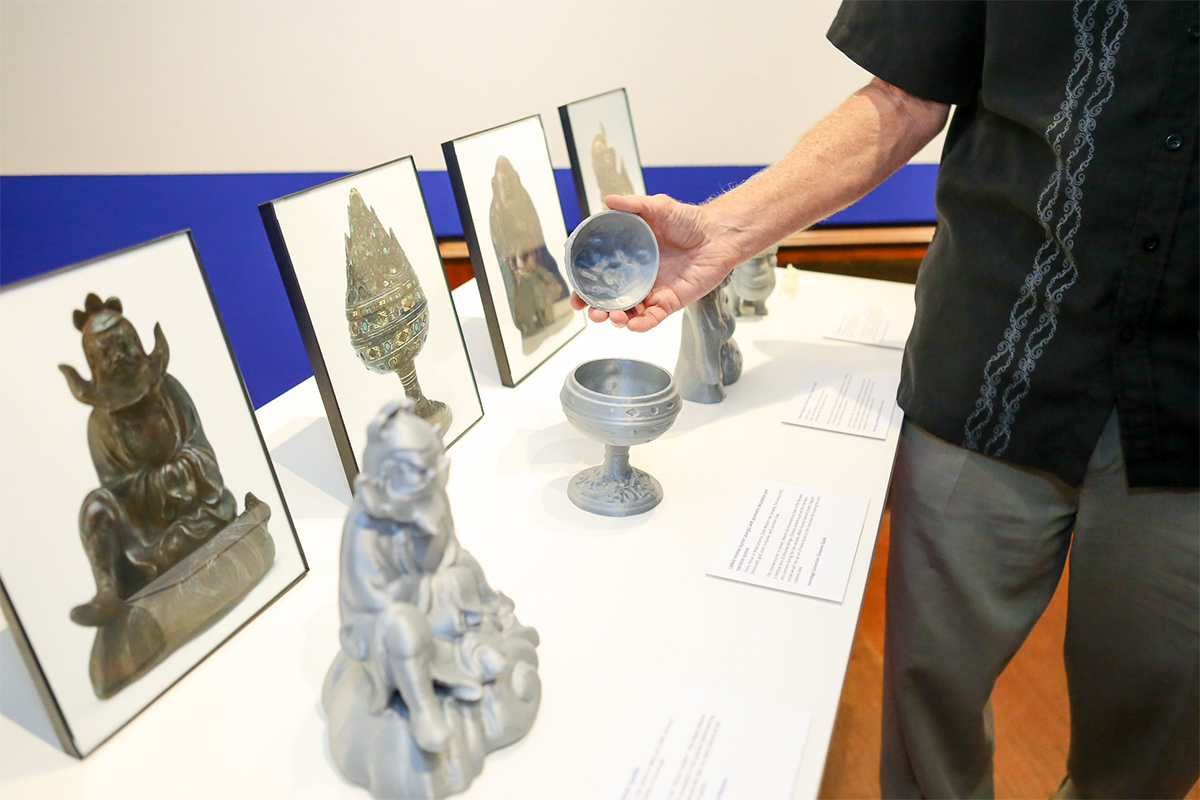
Expanded Education Opportunities
With the ability to rapidly produce prototypes and replicas of collections, museums can now take their artifacts (or the replicas) on the road or ship them to other museums, schools, and universities helping to bring learning and exploration to life in a more accessible and hands-on way.
Creative Engagement Programs
3D printed replicas offer the ideal balance of fine detail with low cost, opening up more opportunities to let museum visitors engage with artifacts, feel their texture, and handle them as they would have been handled in the past. This isn’t usually possible with rare antiquities. Replicas however offer visitors the opportunity to experience objects more intimately.
Safer Object Research
Another useful application for 3D printing lies in preservation and conservation. Rare artifacts that require special care and security can be digitally 3D scanned and reproduced, allowing for examination and exploration without the risk of damage or deterioration to the original artifact. In the case of damaged artifacts by war, weather, or time, as well as artifacts with missing pieces as we will see in a dinosaur example below, 3D printing is able to scan and reprint these individual pieces to help artists and sculptors reassemble the objects in their entirety. This high-value capability is another major feature 3D printing offers both researchers and visitors who have the opportunity to see a before-and-after of each model.
Artifact Repatriation
Repatriation is another area of opportunity in which 3D printing enables the exact reproduction of historical artifacts enabling the original to be returned to its place of origin.
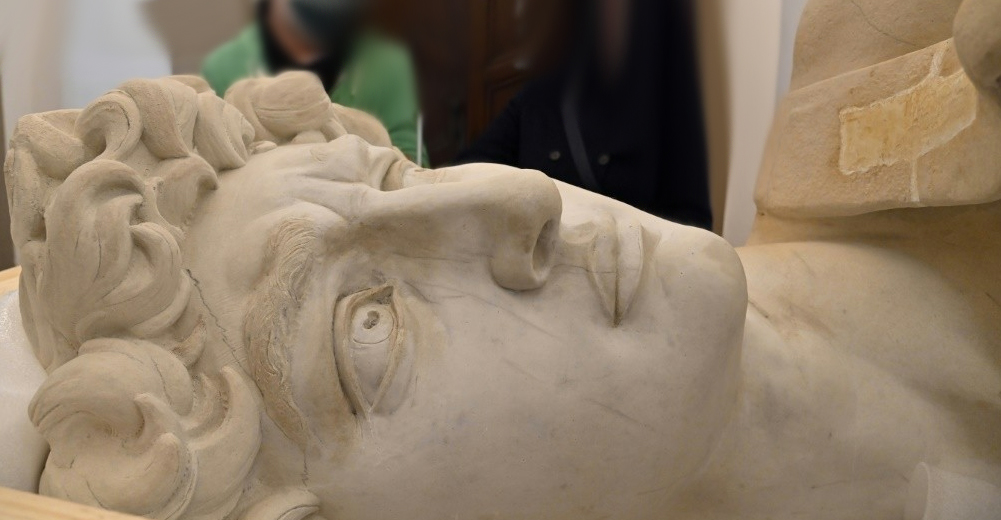
Challenges of 3D Printing in Museums
Although these benefits offer tremendous value to museum directors, staff, and visitors, 3D printing has a few drawbacks that could affect your decision to use it, namely in the areas of copyright, attribution, and authenticity.
Although most museum visitors couldn’t tell an original from a replica they still want to know what they’re looking at. Some visitors view replicas as stale, soulless, and perhaps even inauthentic, others see them as artful recreations. The Museum of Ethnology in Hamburg, for example, closed one of its exhibits when it was learned that their terracotta soldiers “from China” were not the original millennia-old originals.
Reproductions also pose the challenge of proper copyrights and attribution. Who owns these copies, the rights to reproduce the originals, and the copyright to their images?
Examples of 3D Printing in Museum Exhibits
Let’s turn to real-world examples of 3D printing inside the walls of museums. In surveying the following eight examples of museums actively embracing 3D printing, we will look at a few of their leading benefits, the problems they solve, and the possibilities they create.
Scan The World & Google Arts and Culture Partner
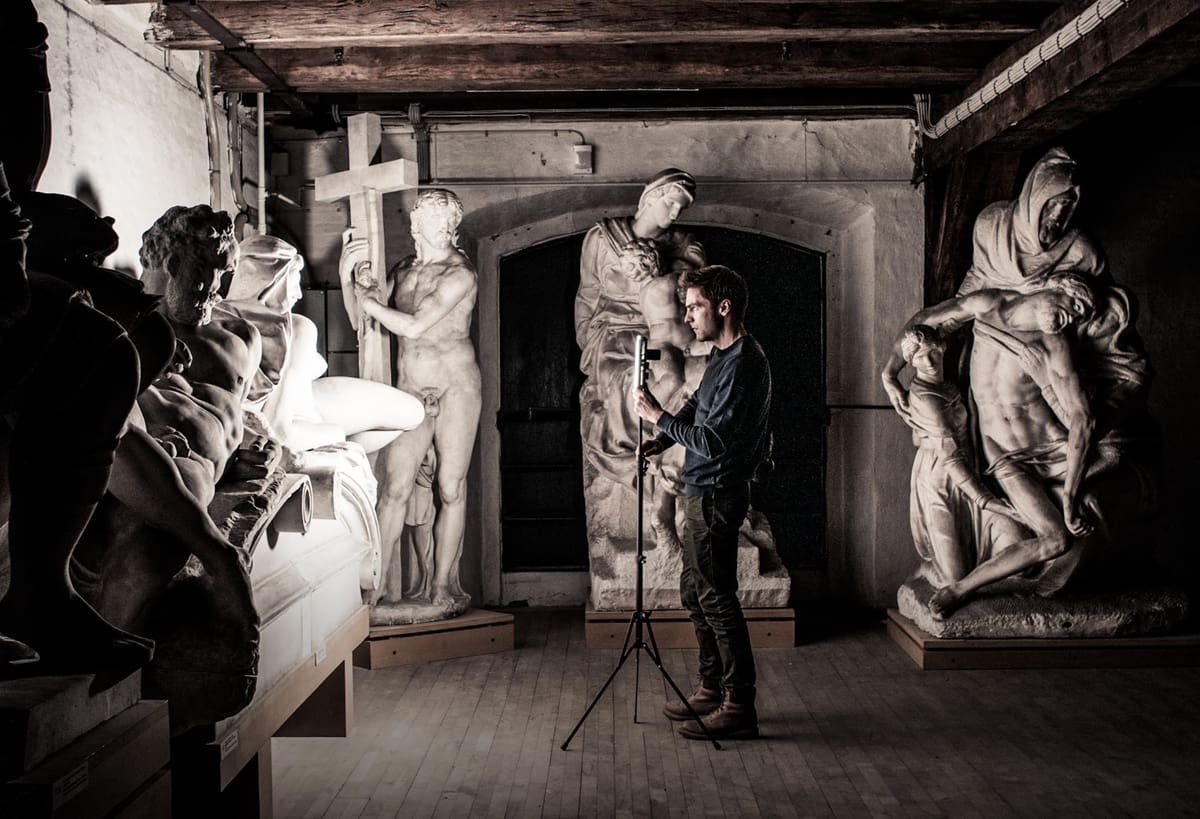
Google is known across the world for helping you find just about anything online, but few may know of its latest forays into the world of art preservation through its Arts and Culture partnership with the London-based Scan The World. This community of 3D artists and conservationists came together in 2014 to build the largest ecosystem of free-to-download, 3D printable cultural artifacts all scanned from museums, public spaces, and private collections.
Scan The World hosts more than 16,000 objects in its collection and through collaborating with over 50 cultural institutions, it serves as the authority on open 3D heritage.
The London-based Victoria and Albert Museum, for example, invited Scan The World for an exhibition called “A World of Fragile Parts.” Although 3D Printing inside the walls of museums caters primarily to visitors with visual impairments, initiatives like Scan The World are democratizing not only physical access but also opportunities in rapid reproduction, preservation, and educational outreach.
3D Printed T-Rex Replica

Dinosaurs may have roamed the Earth millions of years ago, but 3D printing is allowing us to experience their lives and their fascinating outsized skeletons in museums today like the Dutch Naturalis Biodiversity Center and the Nagasaki-based Japanese Dinosaur Museum. Together these institutions have partnered up with the Leiden School of Instrument Makers (LIS) to replicate an actual-sized replica of a Tyrannosaurus rex that was discovered in 2013 in the U.S. state of Montana. With everything well-preserved except the dinosaur’s left leg, skeletal feet, and arm bones, the research team deployed 3D scanning and printing technologies to recreate these parts of the body to build a complete replica of the “Trix.”
Using the original fossil, 3D modelers and anatomists worked to scan every square inch of the Trix at Naturalis and LIS, and eventually they ended up with a skeletal print that weighed more than 600 pounds and comprised 50 3D printed individual parts.
Due to the global pandemic, the Dutch teams were forced to set up their reconstruction site inside the entrance hall of Naturalis, an award-winning natural history museum and research center on biodiversity. In order to practice for the Dinosaur Museum in Japan, they assembled the first-ever copy of the original Tyrannosaurus Rex in the atrium with a time-lapse video camera that was shared with the public. Constructed in a forward-leaning attack position, the team drilled holes through the bones and skeletal parts directly into the metal frame, a technique that prevents damage or deterioration to the original fossil. An agreement signed in 2019 between Naturalis and the Nagasaki City Dinosaur Museum made the project a reality and now museum visitors in Japan have the opportunity to see the only replica of Trix outside the Netherlands in Nagasaki.
This Trix project serves as a great example of 3D printing’s power and potential for facilitating natural history preservation, scientific exploration and education, and the possibility of outreach to museums and exhibits around the world using nearly indistinguishable replicas.
Hudson Museum Returns 19th-Century Artifacts
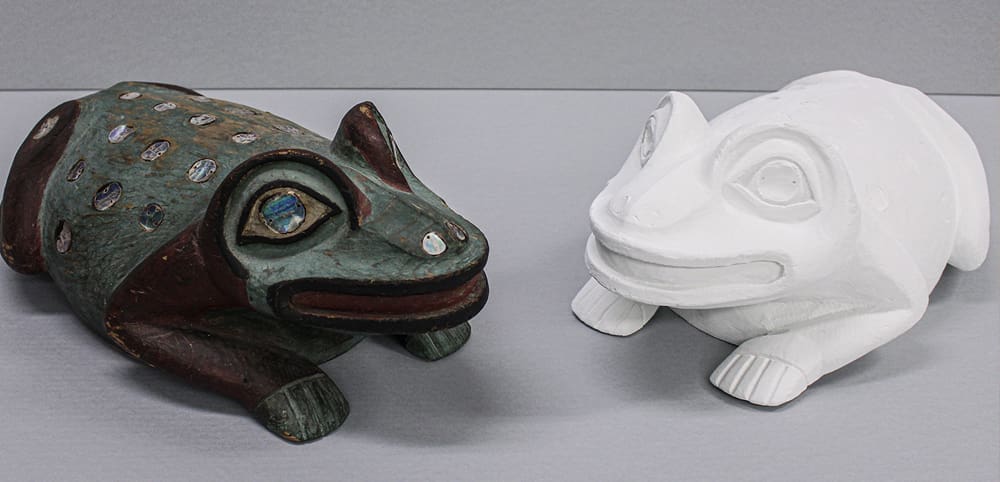
At the University of Maine and the Hudson Museum, a team of composite artists and research engineers are deploying 3D printing technologies to pioneer a “proof of concept” for collection replications, repatriations, and educational purposes. As part of the “Technology and Tradition: Shaping Indigenous Collections for the Future” project, this collaboration centers around the preservation and repatriation of a 19th-century frog clan helmet—an artifact of cultural patrimony dating back to the late nineteenth century—that originally belonged to the Tlingit and Haida Indian Tribes of Alaska.
A team of engineers and artists led the efforts to 3D scan, digitize, and print a copy of the Native American artifact. To make the replica look as similar as possible to the original, a team of artists will also be collaborating to match the paint finish and surface treatments.
As one piece in a larger collection of Native American artifacts, this project exemplifies a “model for responsible preservation and ethical repatriation,” the University says, allowing the original community to retrieve the original Frog Clan Helmet while also enabling the Hudson Museum to showcase a replica on exhibit for those interested in learning about objects of cultural patrimony. With permission granted for the replica from the Central Council of the Alaskan tribes, this 3D project demonstrates the “potential to facilitate the return of the artifact to the Indigenous community and allow the Hudson Museum to retain the culturally important replica for educational purposes.” The Frog Helmet replica project, including videos and pictures of the 3D printing processes, will be available at the Hudson Museum in July 2022.
Lost Sculptures Restored
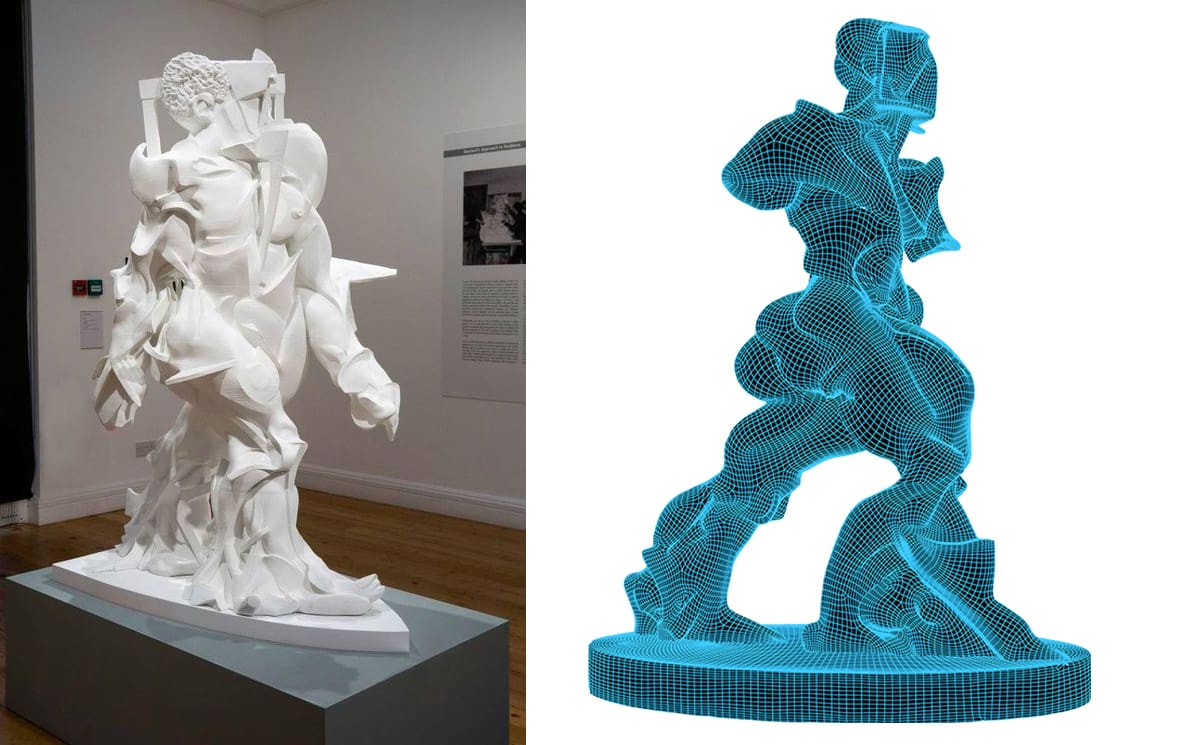
The destruction, in 1927, of a number of plaster and mixed-media sculptures by the Futurist artist Umberto Boccioni was a tragic loss for avant-garde art, according to London’s Estorick Collection of Modern Italian Art.
To enabled modern audiences to experience these lost masterpieces for the very first time, digital artists Matt Smith and Anders Rådén recreated four of Boccioni’s destroyed works by using a combination of vintage photographic material and 3D printing. In addition to the full-size 3D prints, the 2019 exhibition, “Umberto Boccioni: Recreating the Lost Sculptures”, featured time-lapse recordings of the 3D printing and digital sculpting processes, as well as a number of sketches and working drawings for the final prints.
The Estorick Collection even sold 12.5 cm 3D prints of Boccinoini’s work in their gift shop for £19.99.
Smithsonian Users 3D Print Thousands of Artifacts

The Digitization Program Office at the Smithsonian in Washington, D.C., one of the world’s largest museum, education, and research complexes with over 30 million annual visitors, is transforming access to its massive collections by embracing 3D printing technologies. In the midst of a global pandemic, temporary closings, and greater difficulty in traveling, would-be visitors are now turning to online exhibits and 3D printable artifacts from home, revolutionizing the way we experience museums and learn about our shared history.
The 3D Program within DPO actively focuses on bringing their cultural artifacts to life by 3D scanning them and making them available for printing and reproduction—and as long as they have a Creative Commons license, at no cost to the person reproducing them. These open-access scans, totaling more than 2,500 to date, will only grow in volume.
Although nothing replaces the excitement of wandering the expansive halls and galleries of museums and their exhibits, the ability to print a model replica of the Apollo 11 Command Module at home—or the Triceratops Horrius Marsh or Abraham Lincoln’s bust—is also rewarding.
“We feel a great sense of urgency in bringing our collections online,” the Smithsonian says. “With less than 1% of the collections on display at any one time, our digital collections provide building blocks and entryways to new journeys of discovery.”
3D Printed Forest at Expo Dubai’s Spanish Pavilion
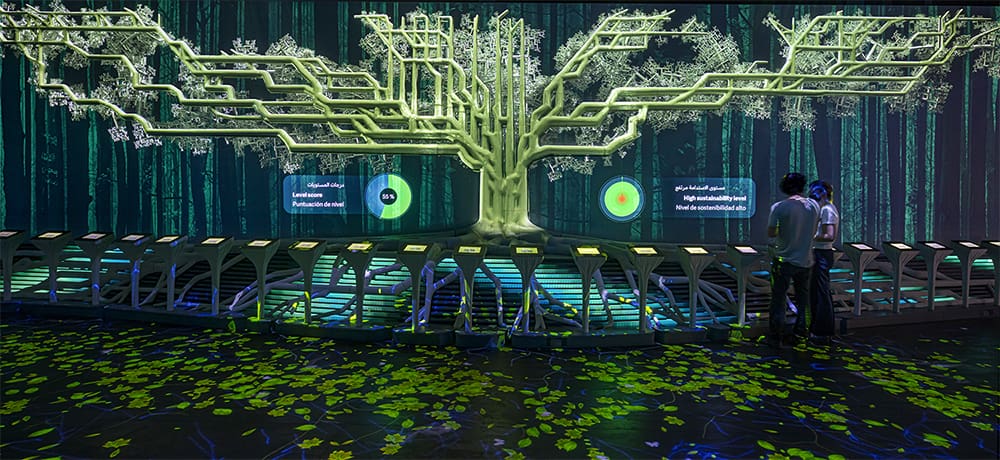
Curators of the Dubai Expo’s Spanish Pavilion turned to 3D printing to help bring to life a “Forest of Intelligence”. This one-of-a-kind experience in which visitors immersed themselves into a dreamlike world of nature, augmented reality, and creative sustainability featured artificial trees that were made with special materials that absorb greenhouse gases and produce oxygen.
Envisioned and engineered by Barcelona-based studios Onionlab and External Reference, this artificial forest uses biodegradable materials, interactive floors, and 3D printed trees to showcase Spain’s innovative efforts at not only aesthetics and sustainability, but also in their endeavors toward upholding the United Nations’ goals for sustainable development. Visitors stepped into “an extraordinary world where digital and physical dimensions produce unique experiences,” says External Reference.
Forming the basis of these artificial trees are a bioplastic polymer and a natural mineral compound called Pure.Tech, a creation of Reshape and PrimLab that seeks to address climate change and develop sustainable solutions. Together these materials absorb carbon dioxide and volatile organic compounds. In order to begin manufacturing, two companies—La Máquina by Noumena, a manufacturing center at the forefront of 3D printing and design scalability, and WASP, an Italian 3D printing firm—partnered up to use delta 3D printers to produce the pollution-absorbing trees for the “Forest of Intelligence” exhibit. While the final product was an experience unlike any other at the expo, the 3D printing technologies used also served a forward-thinking purpose: to inspire visitors to think sustainably about the future, and about ways in which we might adapt our lifestyles to reverse climate change and preserve our planet.
Hosted by Dubai between October 2021 and March 2022, the World Expo welcomed 24 million visitors over six months and included 192 participant countries.
Smithsonian's 3D Printed Statue Exhibit
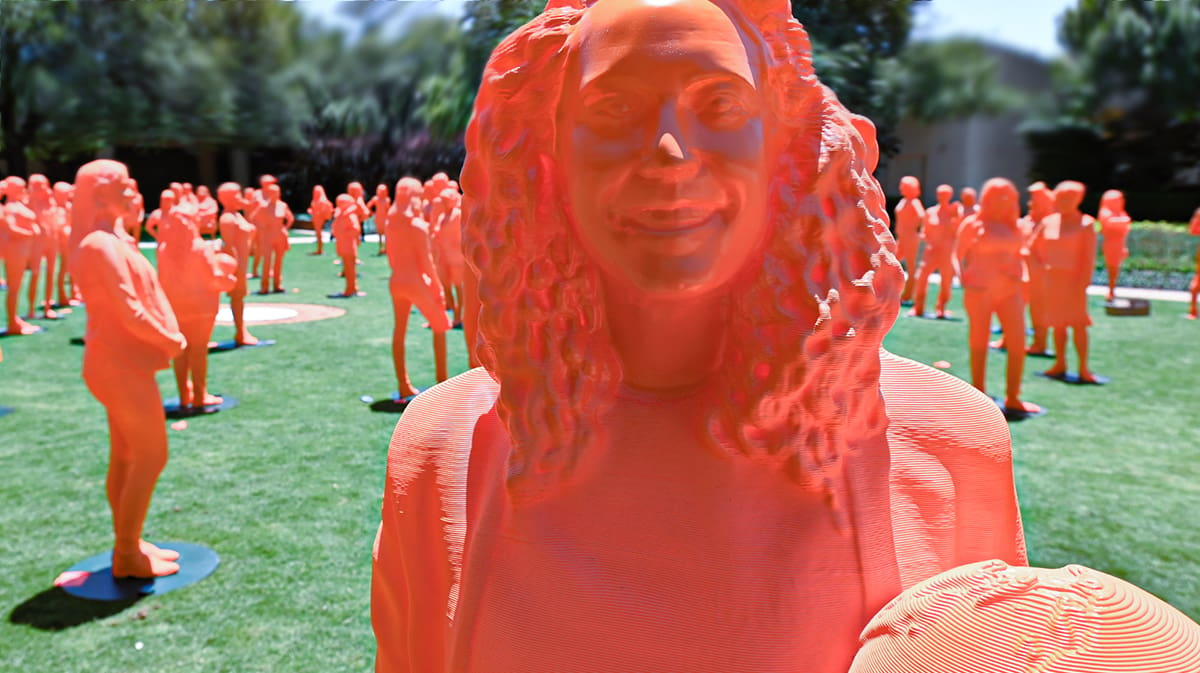
The Smithsonian’s 120 life-sized statues of female leaders from the fields of STEM is a dramatic statement of women’s contribution to science and wouldn’t have been possible without 3D printing. Perhaps photographs or paintings would have been the next option, but these life-size statues made from 3D scans of the women themselves creates a completely different experience.
The decision to choose statues was a deliberate one, the museum says. A study led by Rosie Rios, former Treasurer of the United States, found that fewer than a half-dozen female statues exist in America’s ten largest cities. With women making up less than 30% of the STEM workforce, it was clear that 3D statues would make a visible impact. The philosophy behind IF/THEN, an initiative to spur a cultural shift in careers for young girls, is simple: “seeing is believing.” After a careful selection process for the final list of 120 women in STEM, each woman stood in a high-tech scanning booth that used 89 cameras and 25 projectors to render a 3D image. Using a specialty 3D printer and acrylic gel, a full replica of each woman was constructed one layer at a time.
The goal was to inspire young girls exploring careers in STEM by featuring 3D replicas of the likes of remarkable women like Catie Cuan, a forward-thinking roboticist and dancer, Dr. Siobahn Grady, a computer science professor and entrepreneur, Dr. Davina Durgana, a policy-focused human rights statistician, and Anjali Chadha, a bioengineering student at MIT focused on helping high school girls acquire technology skills. The work of other women focus on diverse projects such as shark tagging, fashion designing, and the training of Olympic athletes.
Since its launch in 2020 the exhibit has been experienced by more than three million people.
3D Printed Museum Map

In the entrance hall of the popular Van Gogh Museum in central Amsterdam lies a 3D-printed model of the building and its labyrinth of rooms, exhibits, and walking paths. What’s so special about this particular model? It’s a simple but breakthrough harbinger of a new technology storming through today’s and tomorrow’s museums: a novel technology that improves access, preserves culture, and educates a wider audience. The Van Gogh Museum is the first in The Netherlands to feature what’s called a 3D-printed “tactile model,” an extensive miniature replica of the entire building—made by Local Makers in collaboration with the Bartiméus Fund and the Accessibility Foundation—to help visitors orient themselves during their exploration of Van Gogh’s nineteenth-century world of art, paintings, and European life.
For the first time visitors can now plan their trip by seeing and touching the entire museum in a single place, getting a “lay of the land” inside without having to flip through a confusing brochure or a lengthy pamphlet filled with details or hard-to-read information. Another major benefit of this innovation is the narrowing of communication gaps in educational and cultural settings often experienced by the visually-impaired.
3D printed museum models such as these—models which feature 3D replicas alongside braille and visual markers—enable visitors who are blind or partially-blind to more ably orient themselves before setting off on their exploration of the past. In this exciting space of 3D printing technologies and the ever-changing world of art, culture, and the sacred places that preserve them, this miniature museum model represents the tip of the iceberg for the applications and the possibilities of 3D printing.
Bringing in over two million annual visitors in 2019 before the pandemic, the Van Gogh Museum is one of the more popular destinations in Amsterdam, taking its visitors across time and space to the artistic world of the famous Dutch Painter. For years visitors referenced brochures and signs on the floors and walls for guidance, but before they enter today, they now have the opportunity to scope out the building with a tactile 3D-printed model of the grounds.
The building’s architecture and layout can now be experienced by all visitors, including those who are blind and partially-sighted, enabling them to quickly orient themselves on paths, elevators, and walking routes before their visit. “Thanks to the support and expertise of the Bartiméus Fund and the Accessibility Foundation, we have been able to make the Van Gogh Museum a little more accessible again,” says Emilie Gordenker, director of the Van Gogh Museum. “We hope to continue to develop in this area in the coming years in order to be able to offer everyone who wants an unforgettable museum experience.”
The 3D tactile model is located in the main entrance hall of the museum and is available to all guests. “It was special to work on these tactile models,” says Séverine Kas, advisor to the Accessibility Foundation. “The sometimes difficult wayfinding in a museum can often be an obstacle for the blind or partially sighted visitor. Thanks to the new tactile model, an overview and understanding of the buildings can be created with both hands and the sighted visitor can now see at a glance how the building works. The model invites you to discover.”
Lead image source: The Dutch Naturalis Biodiversity Center has it's own 3D printing lab and produced this replica of its T-Rex using two Builder Extreme 1500 Pro 3D printers
License: The text of "3D Printing Artifacts & Exhibits: A Museum Guide" by All3DP Pro is licensed under a Creative Commons Attribution 4.0 International License.
